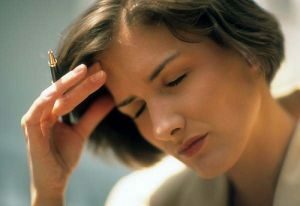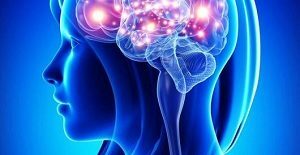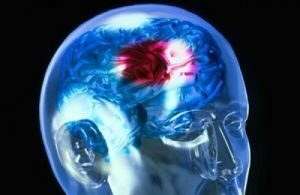 The transient, extremely severe narrowing of the lumen of the intracranial vessels, caused by the prolonged contraction of the muscular part of their membrane, is called specialist angiospasm of the vessels.
The transient, extremely severe narrowing of the lumen of the intracranial vessels, caused by the prolonged contraction of the muscular part of their membrane, is called specialist angiospasm of the vessels.
As a rule, arterioles or capillaries are compressed. Against this background, a negative state of ischemia is formed in the tissues of the pool of the spasmodic vessel threatening such a complication as a stroke.
Cerebral angiospasm is most often detected in persons of working age - after 35-38 years, as well as among pensioners. In children's practice, it accounts for a small percentage of cases and mainly due to various congenital anomalies.
Contents
- The formation of the destructive process
- The main causes and predisposing factors
- Features of the clinical picture
- Diagnostic methods
- Providing quick self help
- Tactics of treatment
- Consequences of cerebral vasospasm and its prevention
How the destructive process of
is formed As a result of deviations in the transport of electrolytes in the intracerebralvessels, the change in the alternation of time allocated to the muscle contraction phases is formedspan of phase with its relaxation. The result is a significant increase in the duration and force of compression of the arterioles - ischemia of the brain.
Local blood flow in the brain structures either significantly slows down and tissues lose nutrients and oxygen, or cease altogether - if the lumen of the vessel is completely blocked, for example, in response to an aneurysmal rupture of the cerebral vessel.
In such a situation, it is not recommended to delay the consultations of specialized specialists with the appointment of treatment measures.
Main causes and predisposing factors
Provision of angiospasm of cerebral vessels can be as simple as everyday situations, for example, intellectual or psychoemotional overload, lack of sleep, and human somatic pathologies.
However, vasospasms can cause more serious causes:
- VSD;

- dystrophic lesions of the structures of the spine;
- tumor processes in the brain;
- diseases of the cardiovascular system;
- Kidney Dysfunction;
- dystrophic changes in the cerebellar myocytes themselves;
- traumatization of the skull;
- atherosclerotic lesion;
- diabetes;
- vasculitis.
Spasm of the vessels of the head can also be caused by the following factors:
- excessive infatuation with strong drinks, for example, coffee;
- abuse of tobacco and alcohol products;
- chronic stressful situations;
- daily lack of oxygen - working in a stuffy room;
- negative state of the environment;
- chronic lack of sleep;
- dehydration;
- intelligent overload;
- is a negative hereditary predisposition.

After careful collection of anamnesis by a specialist, predisposing factors and possible causes of the formed angiospasm of the brain vessels will be revealed. In the future, diagnostic procedures will confirm them.
Features of the clinical picture
The severity of the symptoms of cerebral angiospasm will directly depend on the diameter of the affected vessels, their location and the duration of ischemia.
The main symptom of abnormal narrowing of cerebral vessels is an intense headache - starting in one area of the brain, it often extends to large areas. It can be manifested in the form of gravity, the feeling of squeezing the hoop in the head.
Additional symptoms that indicate cerebral vasospasm:
- possible irradiation of pain impulses to the region of the neck, forehead, eyes;
- multiple improvement of discomfort if the victim lies on the abdomen;
- intense dizziness, nausea;

- on coughing and sneezing symptoms is aggravated;
- memory parameters deterioration;
- excessive fatigue;
- degradation of performance;
- flickering flies, zigzags before the eyes;
- presence of excessive sweating;
- less often - pale skin coloration, changes in pulse parameters;
- numbness and tingling in the area of the temples.
In some cases, the above symptoms were preceded by a vascular accident - a stroke, or rupture of an aneurysm. Patients complained of a severe hearing disorder, visual impairment, difficulty with motor and speech activity.
The condition worsened until the loss of consciousness, seizures, the presence of various paresis and paralysis.
Diagnostic methods
For the most accurate detection of abnormalities in the activity of cerebral vessels, the specialist will perform diagnostic procedures:
- duplex scanning of of brachycephalic and intracranial arteries - allows to comprehensively examine the structure of vessels, the rate of blood flow in them, as well as the presence of atherosclerotic and thrombotic deposits;
- MRI - the most accurate diagnosis;
- radiography with contrasting if it is impossible to conduct an MRI.
The full amount of information obtained after the above diagnostic procedures, allows the specialist to issue an adequate diagnosis.
Providing quick help to yourself
A full-time treatment course should be prescribed only by a neurologist. If there is a deterioration in the state of health caused by cerebral angiospasm, the following measures can be taken at home: 
- wash with cool distilled water;
- lie in a darkened room, put an orthopedic pillow under your head;
- drink 25-30 drops of valerian;
- in the absence of contraindications take an analgesic tablet or antispasmodic;
- to conduct a self-massage session;
- drink slowly with small sips of warm water with a drop of honey.
Tactics of treatment
With the development of angiospasm of the cerebral vessels, complex treatment is needed, which is aimed at eliminating the symptoms and causes of the disease:
- getting rid of negative individual habits, for example, from nicotine addiction;
- maximally complete sanation of all foci of infection;
- course receiving antispasmodics and vasoactive calcium antagonists;

- specialist individually selected drugs that improve cerebral circulation - nootropics, as well as medications that correct the activity of the cerebral vessels themselves, for example, Cerebrolysin, Actovegin;
- , an obligatory component of complex therapy are various natural and synthetic sedatives, if the neurologist deems it necessary, he will appoint both tranquilizers and antidepressants;
- excellently proved themselves adaptogens and complexes of vitamins;
- excellent effect is observed from manual therapy, physiotherapy, reflexology, hydrotherapy.
Recipes of traditional medicine quite successfully supplement the above-mentioned conservative therapy of vascular angiospasm:
- daily take decoctions of medicinal herbs, for example, dogrose, St. John's wort, nettles: 20 g of raw material pour into 200 ml of boiling water, stand for at least 2 hours, filter;
- the true assistant in restoration of elasticity of cerebral vessels has proved to be honey: to combine 500 ml of honey with carefully crumbled 5 medium-sized lemons and the same number of garlic heads - after standing for 7-8 days, you can take 2 ml;
- in a liter of distilled liquid to pour 60 g of herbs of thyme, boil and stand 60 minutes, combine with 20 ml of juice of a golden mustache: daily drink 100 ml.
How to cure cerebral vascular diseases:
Consequences of cerebral vasospasm and its prevention
In case of untimely request for medical care, a negative condition can cause quite serious consequences:
- severe cerebral ischemia - high risk of infarctions and strokes;

- delayed intellectual development in children;
- complete blindness and deafness in adult patients;
- aneurysm rupture;
- various pareses and paralysis;
- persistent attacks of severe migraine.
To avoid the above consequences, specialists are recommended to adhere to such rules:
- correction of the diet - rejection of fatty, heavy, fried foods;
- get rid of existing bad habits;
- avoid chronic stressful situations;
- more often visit fitness centers and gyms;
- in time to eliminate somatic pathologies.
Treatment of cerebral vascular angiospasm, as well as its prevention is impossible without the desire for a healthy lifestyle - eat right, avoid hypodynamia, fully rest at night, adjust the regime of work and rest.


